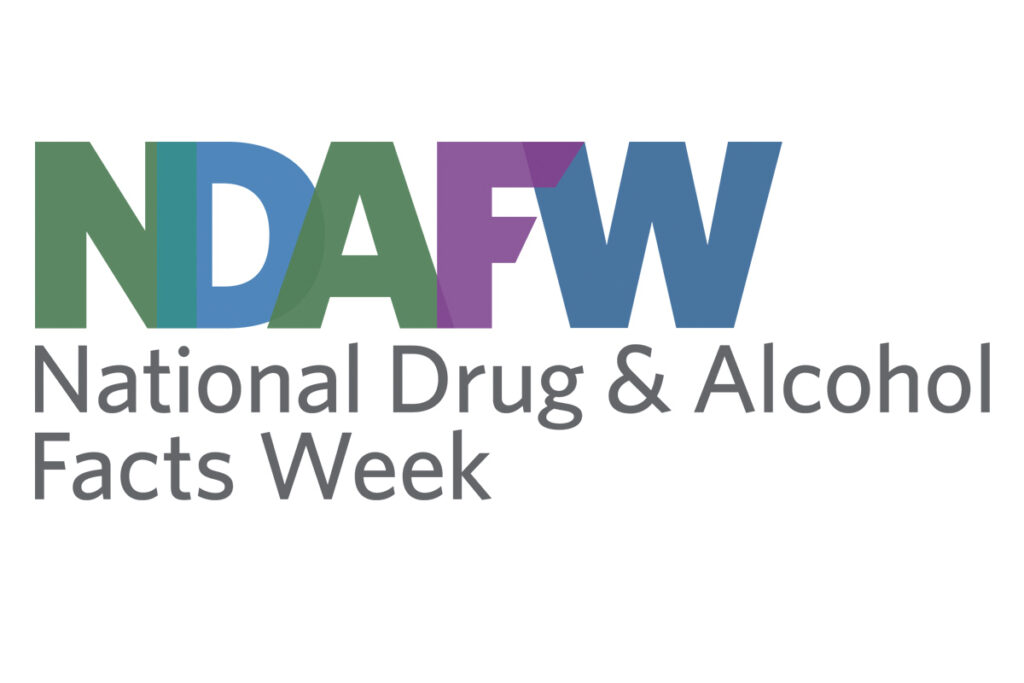Drug and Alcohol Facts Week (NDAFW) is once again upon us, serving as a vital platform for promoting informed dialogue about the science of drug use and addiction, particularly among young people. This annual health observance, organized by the National Institute on Drug Abuse (NIDA) and the National Institute on Alcohol Abuse and Alcoholism (NIAAA), begins March 18th and will conclude March 24th. NDAFW provides a unique opportunity to convene scientists, students, educators, healthcare providers, and community partners to collectively advance scientific understanding and address youth drug and alcohol use on both local and national levels.
NDAFW emphasizes the importance of evidence-based information in shaping attitudes and behaviors related to substance use among youth. By fostering discussions grounded in scientific research, the initiative aims to empower young people to make informed decisions and resist pressures to engage in harmful behaviors. Through a combination of educational resources, interactive events, and community outreach efforts, NDAFW strives to equip individuals with the knowledge and skills necessary to navigate the complexities of substance use and addiction.
In observation of National Drug and Alcohol Facts Week, we spoke with Jon Schlenske, the Division Chief of Substance Use Disorders and Integrated Services here at Comprehensive Healthcare.
What are some common misconceptions or myths about drug and alcohol use that you frequently encounter?
Some common misconceptions or myths about drug and alcohol use that I frequently encounter are really rooted in the public perception that the inflicted are somehow making a choice to continue using. The disease model of addiction is a complex scenario that suggests that addiction and alcoholism contain the same components of any other disease and should be treated as such. This requires de-stigmatization and a judgment-free course of treatment, not a shame-based approach or a clinical thought process that employs only one tactic. Creativity and collaboration continue to be the driver for providing the best treatment possible for this very high-risk population.
From your perspective, what are the most pressing challenges in addressing substance abuse among the youth?
There is a lack of resources on family systems and social determinants of health. Data suggests that prevention programs have had success when presented to youth, and more programs geared towards prevention in schools and other environments would be the appropriate course of action. Additionally, enhanced support for youth when primary caregivers enter treatment needs to be implemented as a treatment support mechanism.
Could you discuss some effective strategies for preventing substance abuse and promoting healthy behaviors during Drug and Alcohol Facts Week and beyond?
- Avoid temptation and peer pressure.
- Seek help for not only substance abuse but also reach out if mental health symptoms become pervasive.
- Keep a well-balanced life.
Rely on your clean and sober support network and continue to implement the learned coping skills that have led the person into recovery.
What role do education and awareness initiatives play in reducing substance abuse rates, particularly among young adults and adolescents?
Education and awareness initiatives play a huge role in reducing substance abuse rates, particularly among young adults and adolescents. Using evidence-based prevention techniques and addiction education provides the knowledge to make healthier choices and will provide ways for an individual to avoid risky situations and triggering events.
Are there any notable trends or patterns in substance abuse that you’ve observed recently? How do these trends influence prevention strategies?
The obvious notable trend and pattern that we have observed recently is the continued fentanyl epidemic. Due to the heightened use of fentanyl, amongst other drugs, access issues continue to be a barrier. Relapse rates associated with the use of opioids continue to be at around 80% during the first year. Harm reduction continues to be a strategy that seems to provide enhanced success rates and fewer deaths. Wrap-around services, same-day access, and fewer barriers to MAT and other programs will offer better support moving forward.
How can families and caregivers effectively communicate with young people about the risks of drug and alcohol use? What resources are available to support these conversations?
Families can effectively communicate with young people about the risks of drug and alcohol use by being transparent and honest and not making it an uncomfortable topic. Parents and caregivers should talk regularly about how to best avoid drugs and alcohol and the potential consequences that will be attached. Additionally, families and caregivers need to be a safe place for young people to discuss drugs and alcohol, peer groups, and other social scenarios that might present a challenge. If the family needs assistance for the struggling young person, the community resource guide would be a great starting point for finding the appropriate support.
Finally, based on your expertise, what message or advice would you like to convey to our audience regarding Drug and Alcohol Facts Week and the broader issue of substance abuse prevention?
I would like to convey a message of support and de-stigmatization. As communities, we need to wrap our arms around the suffering and provide them with environments that will put them in the very best position to succeed. Additionally, we must stay trauma-informed, present, and creative in terms of treating the whole person and, at times, the family. We must remain focused on social determinants of health and assist in breaking down front-door barriers and increasing access throughout the system of care.



